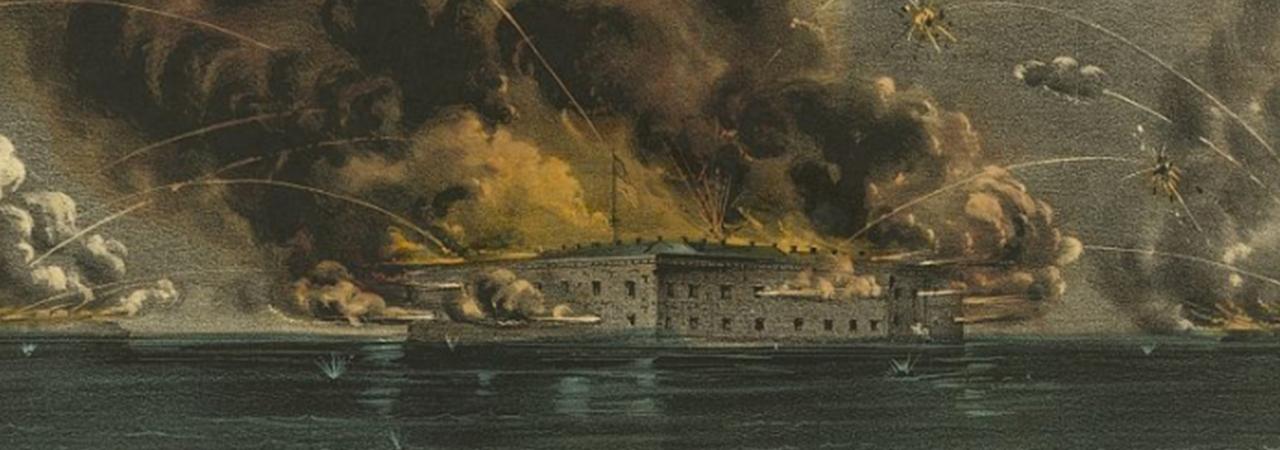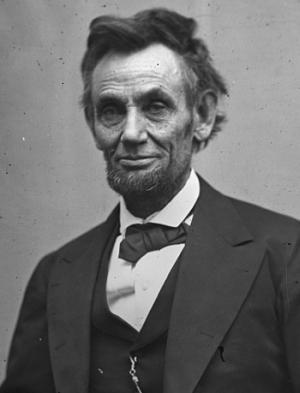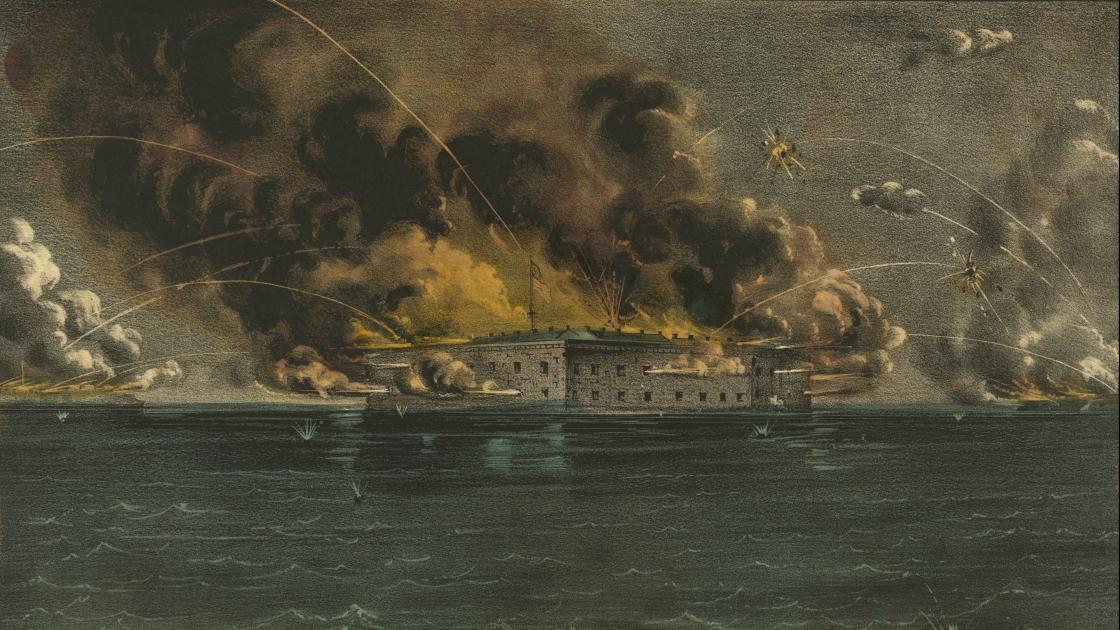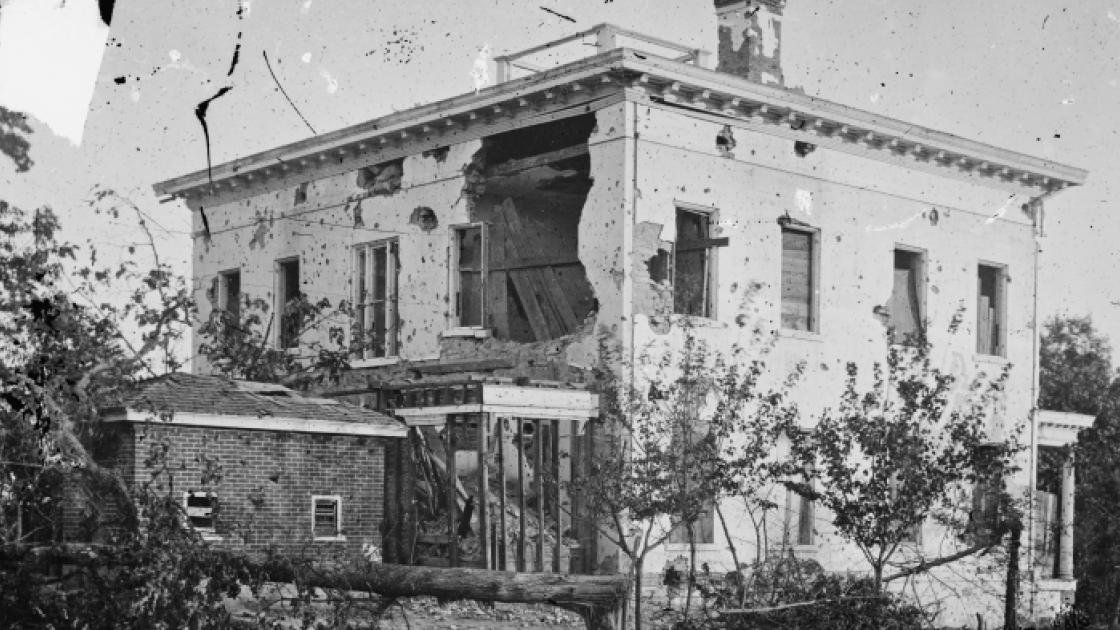10 Facts: What Everyone Should Know About the Civil War

Fact #1: The Civil War was fought between the Northern and the Southern states from 1861-1865.
The American Civil War was fought between the United States of America and the Confederate States of America, a collection of eleven southern states that left the Union in 1860 and 1861. The conflict began primarily as a result of the long-standing disagreement over the institution of slavery. On February 9, 1861, Jefferson Davis, a former U.S. Senator and Secretary of War, was elected President of the Confederate States of America by the members of the Confederate constitutional convention. After four bloody years of conflict, the United States defeated the Confederate States. In the end, the states that were in rebellion were readmitted to the United States, and the institution of slavery was abolished nation-wide.

Fact #2: Abraham Lincoln was the President of the United States during the Civil War.
Abraham Lincoln grew up in a log cabin in Kentucky. He worked as a shopkeeper and a lawyer before entering politics in the 1840s. Alarmed by his anti-slavery stance, seven southern states seceded soon after he was elected president in 1860—with four more states to soon follow. Lincoln declared that he would do everything necessary to keep the United States united as one country. He refused to recognize the southern states as an independent nation and the Civil War erupted in the spring of 1861. On January 1, 1863, Lincoln issued the Emancipation Proclamation, which freed the slaves in the areas of the country that "shall then be in rebellion against the United States." The Emancipation Proclamation laid the groundwork for the eventual freedom of slaves across the country. Lincoln won re-election in 1864 against opponents who wanted to sign a peace treaty with the southern states. On April 14, 1865, Lincoln was shot by assassin John Wilkes Booth, a southern sympathizer. Abraham Lincoln died at 7:22 am the next morning.
Fact #3: The issues of slavery and central power divided the United States.
Slavery was concentrated mainly in the southern states by the mid-19th century, where slaves were used as farm laborers, artisans, and house servants. Chattel slavery formed the backbone of the largely agrarian southern economy. In the northern states, industry largely drove the economy. Many people in the north and the south believed that slavery was immoral and wrong, yet the institution remained, which created a large chasm on the political and social landscape. Southerners felt threatened by the pressure of northern politicians and “abolitionists,” who included the zealot John Brown, and claimed that the federal government had no power to end slavery, impose certain taxes, force infrastructure improvements, or influence western expansion against the wishes of the state governments. While some northerners felt that southern politicians wielded too much power in the House and the Senate and that they would never be appeased. Still, from the earliest days of the United States through the antebellum years, politicians on both sides of the major issues attempted to find a compromise that would avoid the splitting of the country, and ultimately avert a war. The Missouri Compromise, the Compromise of 1850, the Kansas-Nebraska Act, and many others, all failed to steer the country away from secession and war. In the end, politicians on both sides of the aisle dug in their heels. Eleven states left the United States in the following order and formed the Confederate States of America: South Carolina, Mississippi, Florida, Alabama, Georgia, Louisiana, Texas, Virginia, Arkansas, North Carolina, and Tennessee.
Fact #4: The Civil War began when Southern troops bombarded Fort Sumter, South Carolina.
When the southern states seceded from the Union, war was still not a certainty. Federal forts, barracks, and naval shipyards dotted the southern landscape. Many Regular Army officers clung tenaciously to their posts, rather than surrender their facilities to the growing southern military presence. President Lincoln attempted to resupply these garrisons with food and provisions by sea. The Confederacy learned of Lincoln’s plans and demanded that the forts surrender under threat of force. When the U.S. soldiers refused, South Carolinians bombarded Fort Sumter in the center of Charleston harbor. After a 34-hour battle, the soldiers inside the fort surrendered to the Confederates. Legions of men from north and south rushed to their respective flags in the ensuing patriotic fervor.

Fact #5: The North had more men and war materials than the South.
At the beginning of the Civil War, 22 million people lived in the North and 9 million people (nearly 4 million of whom were slaves) lived in the South. The North also had more money, more factories, more horses, more railroads, and more farmland. On paper, these advantages made the United States much more powerful than the Confederate States. However, the Confederates were fighting defensively on territory that they knew well. They also had the advantage of the sheer size of the Southern Confederacy. Which meant that the northern armies would have to capture and hold vast quantities of land across the south. Still, too, the Confederacy maintained some of the best ports in North America—including New Orleans, Charleston, Mobile, Norfolk, and Wilmington. Thus, the Confederacy was able to mount a stubborn resistance.
Fact #6: The bloodiest battle of the Civil War was the Battle of Gettysburg, Pennsylvania.
The Civil War devastated the Confederate states. The presence of vast armies throughout the countryside meant that livestock, crops, and other staples were consumed very quickly. In an effort to gather fresh supplies and relieve the pressure on the Confederate garrison at Vicksburg, Mississippi, Confederate General Robert E. Lee launched a daring invasion of the North in the summer of 1863. He was defeated by Union General George G. Meade in a three-day battle near Gettysburg, Pennsylvania that left nearly 51,000 men killed, wounded, or missing in action. While Lee's men were able to gather the vital supplies, they did little to draw Union forces away from Vicksburg, which fell to Federal troops on July 4, 1863. Many historians mark the twin Union victories at Gettysburg and Vicksburg, Mississippi, as the “turning point” in the Civil War. In November of 1863, President Lincoln traveled to the small Pennsylvania town and delivered the Gettysburg Address, which expressed firm commitment to preserving the Union and became one of the most iconic speeches in American history.
Fact #7: Ulysses S. Grant and Robert E. Lee did not meet on the field of battle until May of 1864.
Arguably the two most famous military personalities to emerge from the American Civil War were Ohio born Ulysses S. Grant, and Virginia born Robert E. Lee. The two men had very little in common. Lee was from a well respected First Family of Virginia, with ties to the Continental Army and the founding fathers of the nation. While Grant was from a middle-class family with no martial or family political ties. Both men graduated from the United States Military Academy at West Point and served in the old army as well as the Mexican-American War. Lee was offered command of the federal army amassing in Washington, in 1861, but he declined the command and threw his hat in with the Confederacy. Lee's early war career got off to a rocky start, but he found his stride in June of 1862 after he assumed command of what he dubbed the Army of Northern Virginia. Grant, on the other hand, found early success in the war but was haunted by rumors of alcoholism. By 1863, the two men were by far the best generals on their respective sides. In March of 1864, Grant was promoted to lieutenant general and brought to the Eastern Theater of the war, where he and Lee engaged in a relentless campaign from May of 1864 to Lee's surrender at Appomattox Court House eleven months later.
Fact #8: The North won the Civil War.
After four years of conflict, the major Confederate armies surrendered to the United States in April of 1865 at Appomattox Court House and Bennett Place. The war bankrupted much of the South, left its roads, farms, and factories in ruins, and all but wiped out an entire generation of men who wore the blue and the gray. More than 620,000 men died in the Civil War, more than any other war in American history. The southern states were occupied by Union soldiers, rebuilt, and gradually re-admitted to the United States over the course of twenty difficult years known as the Reconstruction Era.

Fact #9: After the war was over, the Constitution was amended to free the slaves, to assure “equal protection under the law” for American citizens, and to grant black men the right to vote.
During the war, Abraham Lincoln freed some slaves and allowed freedmen to join the Union Army as the United States Colored Troops (U.S.C.T.). It was clear to many that it was only a matter of time before slavery would be fully abolished. As the war drew to a close, but before the southern states were re-admitted to the United States, the northern states added the 13th, 14th, and 15th amendments to the Constitution. The amendments are also known as the "Civil War Amendments." The 13th Amendment abolished slavery in the United States, the 14th Amendment guaranteed that citizens would receive “equal protection under the law,” and the 15th Amendment granted black men the right to vote. The 14th Amendment has played an ongoing role in American society as different groups of citizens continue to lobby for equal treatment by the government.
Fact #10: Many Civil War battlefields are threatened by development.
The United States government has identified 384 battles that had a significant impact on the larger war. Many of these battlefields have been developed—turned into shopping malls, pizza parlors, housing developments, etc.—and many more are threatened by development. Since the end of the Civil War, veterans and other citizens have struggled to preserve the fields on which Americans fought and died. The American Battlefield Trust and its partners have preserved tens of thousands of acres of battlefield land.
Learn More: Civil War Animated Map
Related Battles
2,896
1,982
2,691
13,846
13,047
10,669
12,401
10,316
17,304
13,460
4,910
32,363
23,049
28,063
3,722
5,500


